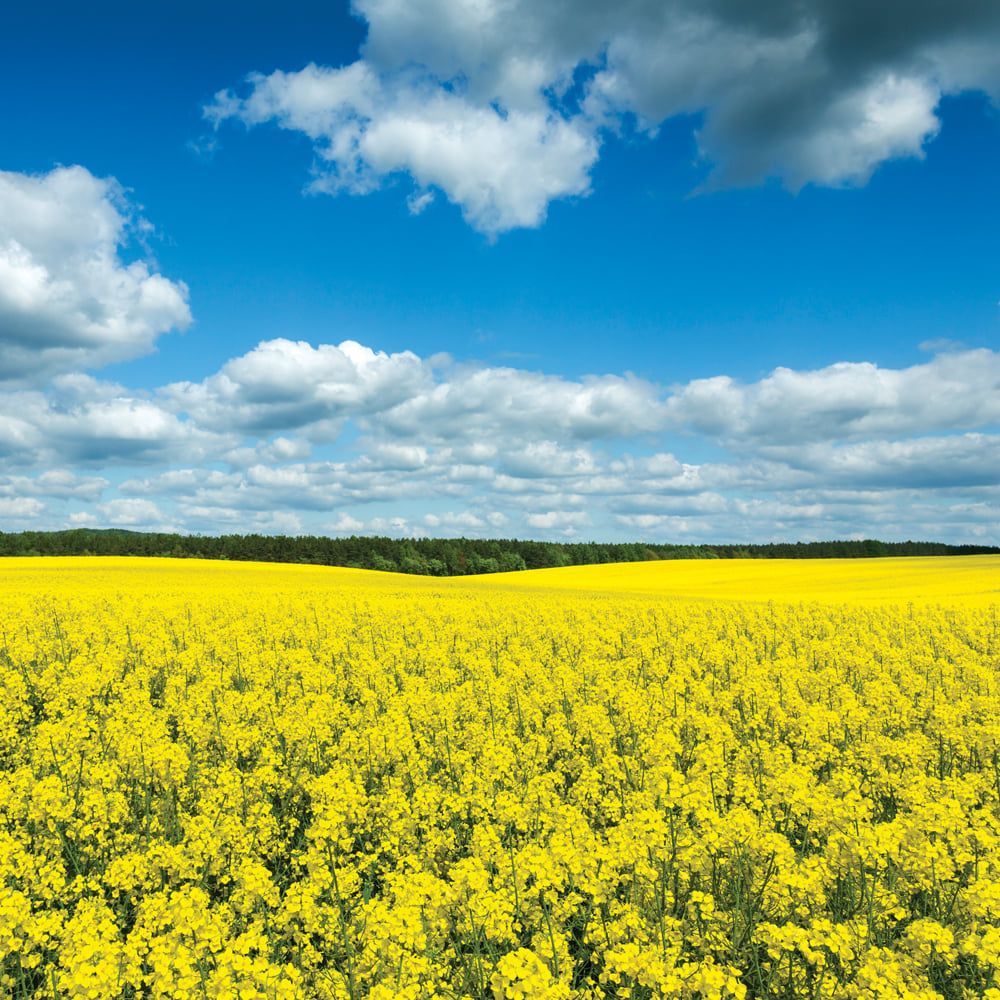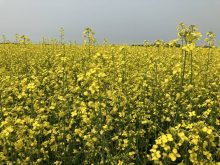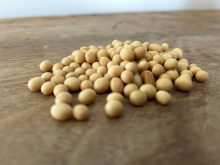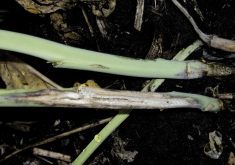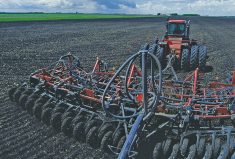This year was a head-scratcher for canola growers across the Prairies.

“For a lot of our producers, it was a drought year, with a bumper crop and a wet harvest — those things shouldn’t go together,” said Keith Gabert, agronomist with the Canola Council of Canada.
This year looked like it would be a wreck right from seeding, said Gabert.
Moisture conditions at seeding ranged from “exceptionally dry to pretty good, depending on how early growers started seeding.” But it was another 60 days before producers saw any substantial rainfall, and by then, canola crops were already struggling.
“Typically, if we make mistakes at seeding, a half an inch of rain in the next seven to 14 days sort of forgives all of the challenges we’ve had — that didn’t happen,” he said.
Read Also

Hail research hopes to benefit potato growers
Alberta research scientist measures hail storm and heat dome affects on potato crops
“So we got fairly poor stand establishment, and we had patchy fields with thin patches.”
But even with the early-season struggles, the crop flowered after some late-season rain and yielded 1.5 million tonnes more than Statistics Canada estimated earlier in the growing season.
“We expected the crop to be small — smaller than we’d like — but I think most growers met or exceeded their target yields,” said Gabert. “They would have been happy with 10 bushels under their target yield when they looked at the crop in the middle of July.
“Not a single agronomist or grower I’ve talked to expected the kinds of yields they got.”
A small percentage of growers — around five per cent — never got rain, so “they got the yield they expected, which was exceptionally poor,” he said.
“But most growers in central Alberta found 10 to 25 bushels in their field per acre more than they would have predicted when they put a combine in.”
It’s a mystery
So what happened? Was it good management, good luck, or something else?
Gabert can’t say.
“This is going to be that one in 10 or 20 years where odd things happen — where a low plant establishment outyields a better one,” he said.
Still don’t expect a repeat, said Gabert. Instead, get the right seed and have a solid plan for fertility as well as disease and pest control.
It’s especially important to choose a variety “that’s specifically adapted for your area.”
“Where I’m at — Highway 2 and west — I often tell growers that more important than utility is maturity,” he said. “If you’re going to run into green seed issues, you have to restrict yourselves to the varieties that are earlier than the checks. Don’t go chase that last 10 per cent yield because it often doesn’t happen in a short-season zone.
“The earlier varieties might actually mature and get you a No. 1 canola sample, and they’re a safer bet.”
Disease resistance is another good trait to have — if you need it.
“A lot of growers ask me in November and December about blackleg-resistant varieties, but they haven’t necessarily gone to their field and cut some stems when they grow canola to know if blackleg is an issue in their field,” said Gabert. “Your field history probably tells you whether you need to go for the specific traits on the market.”
Blackleg, sclerotinia, and clubroot are the “big-ticket problems” for canola growers, and there’s seed available to combat all those diseases, he said.
“You need to know what your yield challenges are, and if it’s one of those diseases, then you can select a variety that would be an improvement.”
‘Slow down’
Aside from choosing the right seed, the best thing at seeding is “slow down and shallow up.”
Increased seeding speeds can reduce emergence and “cause all kinds of headaches.”
“We know that as growers speed up or get into a bit of a hurry, their equipment tends not to place that seed as accurately or as uniformly in the soil,” said Gabert.
Gabert recommends seeding at one-half to one inch to increase emergence.
“We know that our best odds of success when it’s seeded with good soil moisture is at an inch or less.”
But producers need to adjust their plans with the conditions — as they learned in 2015.
“We probably didn’t give the drought conditions the kind of weight that we could have,” said Gabert.
“We didn’t know we were looking at another 60 days of dry conditions. Had we known that, we might have been a little braver seeding into moisture with canola.
“2015 was a bit of a reminder that you need to do as many things right as you can and adjust your plans if you need to.”

